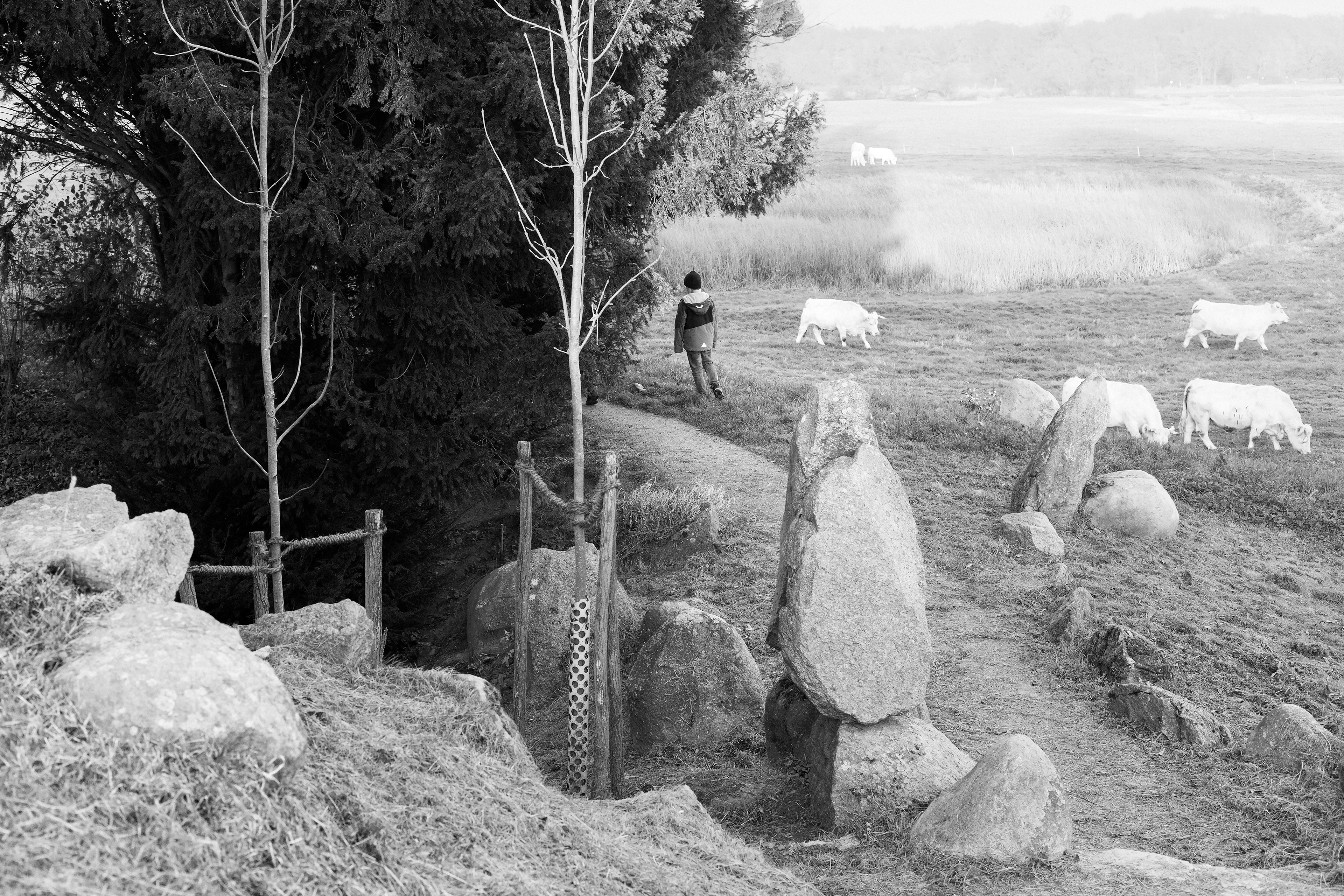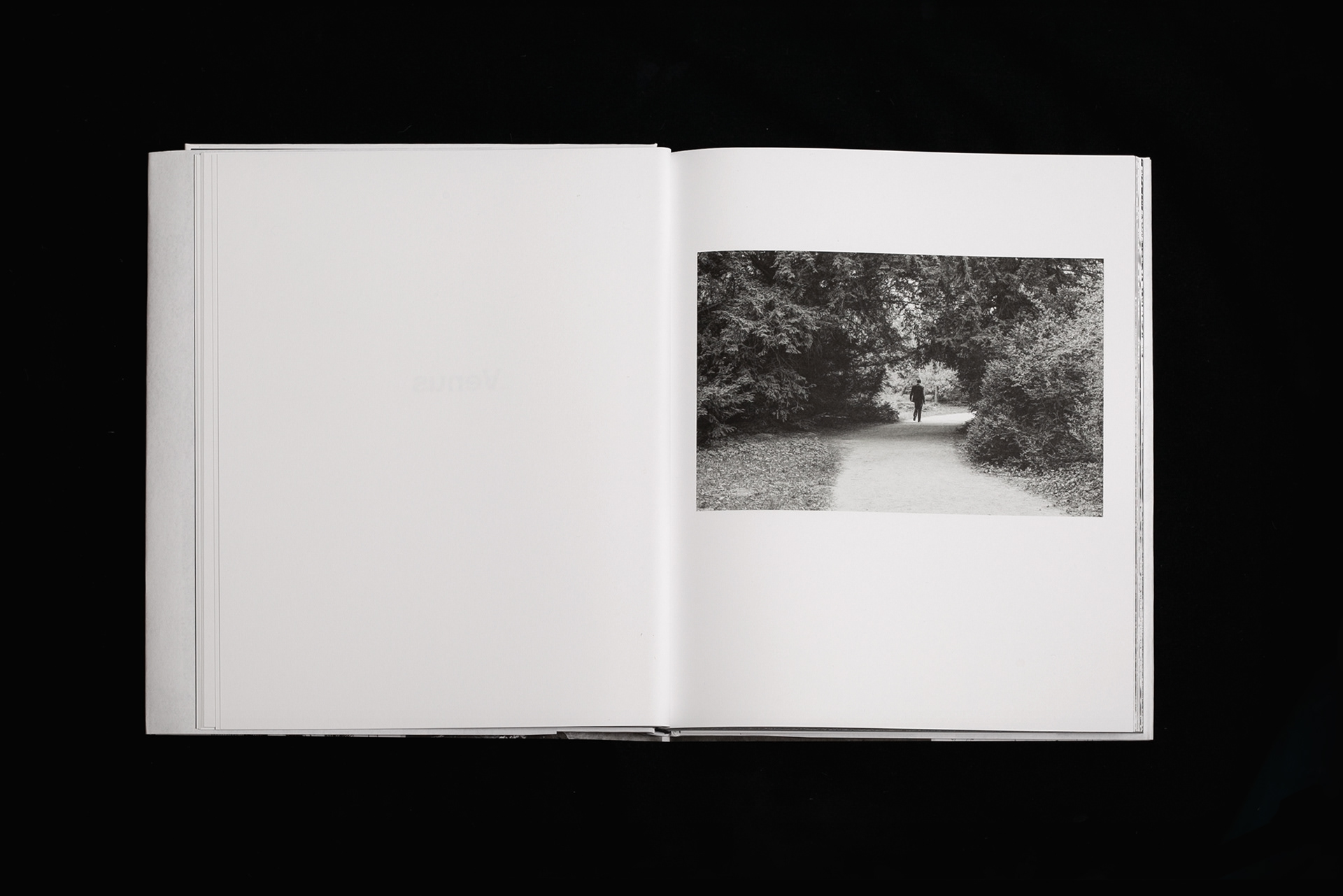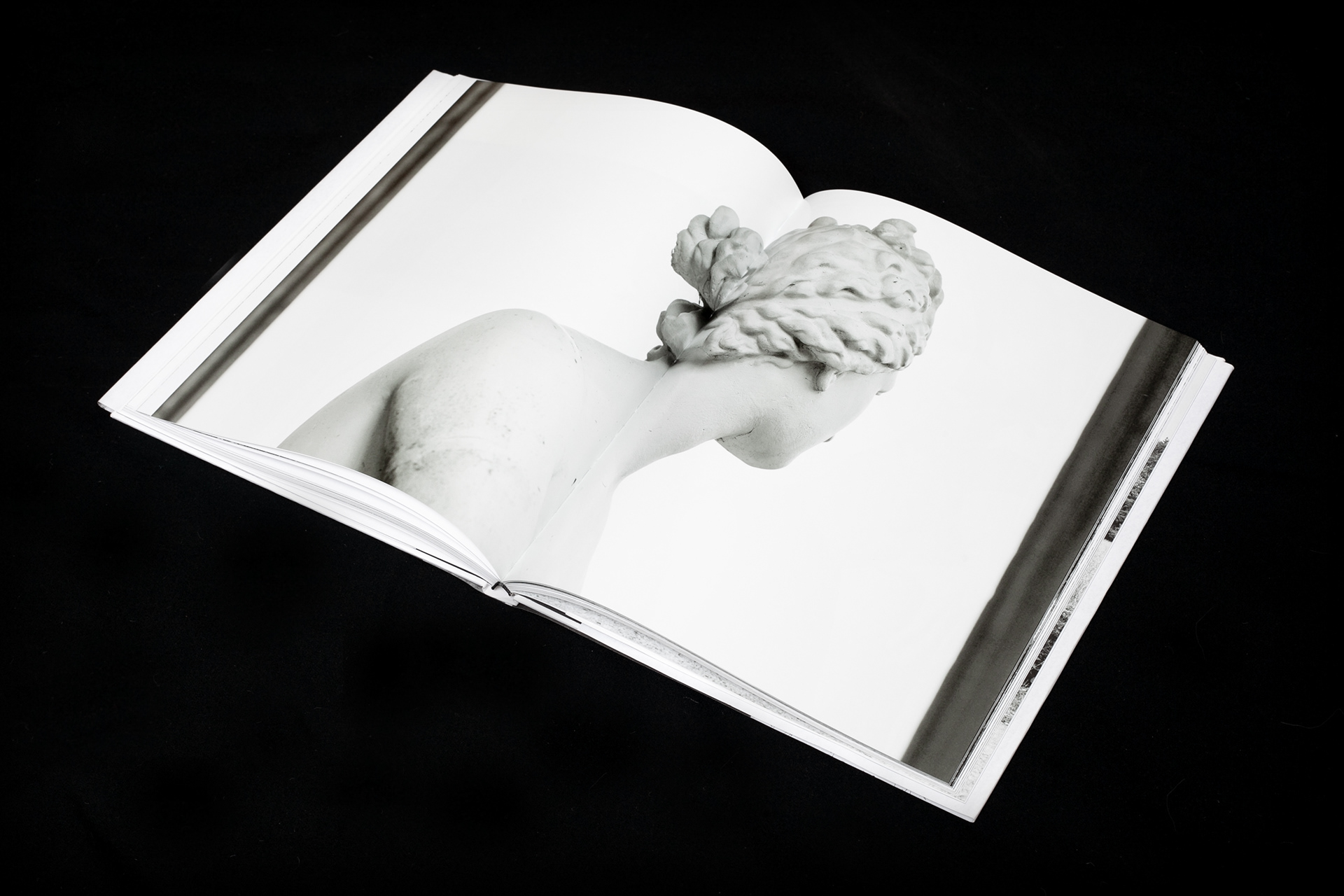Vesuv, Venus
Since the Age of Enlightenment, our understanding of nature in the Western world has undergone a profound transformation, and no other medium captures this quite like the English landscape garden. In Vesuv, Venus, Saskia Groneberg takes a closer look at one of Europe’s most significant garden monuments, Wörlitzer Park. She embarks on a photographic journey in search of the age-old dream of a paradise on Earth, the harmonious coexistence of humankind and nature. In fine gradations of gray, she plays with the contradictory yet dreamlike spaces of this art(ificial) nature, oscillating between utopia and reality.
On this journey through the park, space and time grow indistinguishable. Winter follows spring, detail follows sequence, dream leads to deconstruction. A replica of Mount Vesuvius fashioned from enormous blocks of stone and the sculpture of a Venus de Medici simultaneously symbolize and deconstruct the antipodes of masculine and feminine, earthly and divine, darkness and light. Mythical motifs such as the swan and the fig leaf brush up against mundane tourists. The latter sit in gondolas on the lake, hurry towards historical architectures – foldout maps and walking sticks in hand – or follow winding paths from viewpoint to viewpoint. Along the way, the plants, buildings, canals, even the wildlife reveal themselves to be part of a dreamlike scenery in which the visitors move about like figures in a tableau vivant. They are observers and protagonists at the same time.
“Saskia Groneberg embarks on a search that not only explores the essence of one of the most important historical garden monuments in Europe but the nature of photography in the 21st century. Whereas technical characteristics and requirements (the large format, for instance, or long exposure times) largely conditioned the aesthetic of the garden photography of someone like Eugène Atget, an artist in the early 21st century has countless technical as well as aesthetic possibilities at her disposal. By now digital and analog photography co-exist side by side, and the boundaries between photography, film, and video have become completely fluid. In conceiving her series, Saskia Groneberg decided on a rhythmic structure, at times reminiscent of film stills, in subtle gradations of black and white, on uncoated paper: three decisions that initially seem to contradict what we would instinctively expect from the photographic interpretation of a stately, vividly colorful, historical garden monument, whose spatial impression is truly overwhelming when experienced in real life. But the photographer takes precisely this play on expectations and transforms it into the artistic means with which to explore the essence of the garden as a medium in general and of Wörlitzer Park as an artwork specifically.” – Hans von Trotha
“Saskia Groneberg embarks on a search that not only explores the essence of one of the most important historical garden monuments in Europe but the nature of photography in the 21st century. Whereas technical characteristics and requirements (the large format, for instance, or long exposure times) largely conditioned the aesthetic of the garden photography of someone like Eugène Atget, an artist in the early 21st century has countless technical as well as aesthetic possibilities at her disposal. By now digital and analog photography co-exist side by side, and the boundaries between photography, film, and video have become completely fluid. In conceiving her series, Saskia Groneberg decided on a rhythmic structure, at times reminiscent of film stills, in subtle gradations of black and white, on uncoated paper: three decisions that initially seem to contradict what we would instinctively expect from the photographic interpretation of a stately, vividly colorful, historical garden monument, whose spatial impression is truly overwhelming when experienced in real life. But the photographer takes precisely this play on expectations and transforms it into the artistic means with which to explore the essence of the garden as a medium in general and of Wörlitzer Park as an artwork specifically.” – Hans von Trotha
Archival Pigment Prints, framed,
70 × 100 cm and 90 × 130 cm, 2015/2018
Edition of 5+2
70 × 100 cm and 90 × 130 cm, 2015/2018
Edition of 5+2
Artist Book, hardcover, 148 pages, offset (duotone)
31 × 24.5 × 2.2 cm
Published by Edition Taube, 2021
31 × 24.5 × 2.2 cm
Published by Edition Taube, 2021



Installation view at Stiftung Federkiel, Munich, 2021/2022












